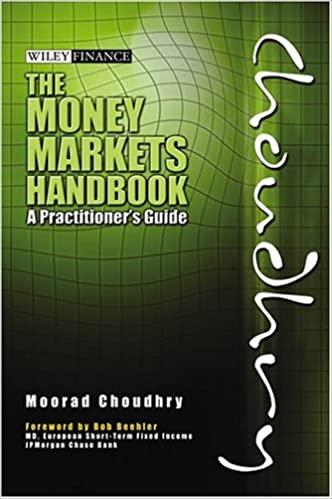
P19-19. Dividends versus Reinvestment National Business Machine Co. (NBM) has $7 million of extra cash after taxes have been paid. NBM has two choices to make use of this cash. One alternative is to invest the cash in financial assets. The resulting investment income will be paid out as a special dividend at the end of three years. In this case, the firm can invest either in Treasury bills yielding 9 percent or in 11 percent preferred stock. Another alternative is to pay out the cash now as dividends. This would allow the shareholders to invest on their own in Treasury bills with the same yield or in preferred stock. The corporate tax rate is 35 percent. Assume the investor has a 31 percent personal income tax rate, which is applied to interest income and preferred stock dividends. The personal dividend tax rate is 15 percent on common stock dividends. The corporate dividend exclusion of 100 percent applies. Should the cash be paid today or in three years? a. Which of the two options generates the higher after-tax income for the shareholders? (Round the final answers to 2 decimal places. Do not round intermediate calculations. Omit $ sign in your response.) If the firm makes the investment After-tax cash flow to shareholders: T-bills $ $ Preferred stock If the firm pays out dividend and individual makes the investment Future value of investment: $ T-bills Preferred stock P19-19. Dividends versus Reinvestment National Business Machine Co. (NBM) has $7 million of extra cash after taxes have been paid. NBM has two choices to make use of this cash. One alternative is to invest the cash in financial assets. The resulting investment income will be paid out as a special dividend at the end of three years. In this case, the firm can invest either in Treasury bills yielding 9 percent or in 11 percent preferred stock. Another alternative is to pay out the cash now as dividends. This would allow the shareholders to invest on their own in Treasury bills with the same yield or in preferred stock. The corporate tax rate is 35 percent. Assume the investor has a 31 percent personal income tax rate, which is applied to interest income and preferred stock dividends. The personal dividend tax rate is 15 percent on common stock dividends. The corporate dividend exclusion of 100 percent applies. Should the cash be paid today or in three years? a. Which of the two options generates the higher after-tax income for the shareholders? (Round the final answers to 2 decimal places. Do not round intermediate calculations. Omit $ sign in your response.) If the firm makes the investment After-tax cash flow to shareholders: T-bills $ $ Preferred stock If the firm pays out dividend and individual makes the investment Future value of investment: $ T-bills Preferred stock







